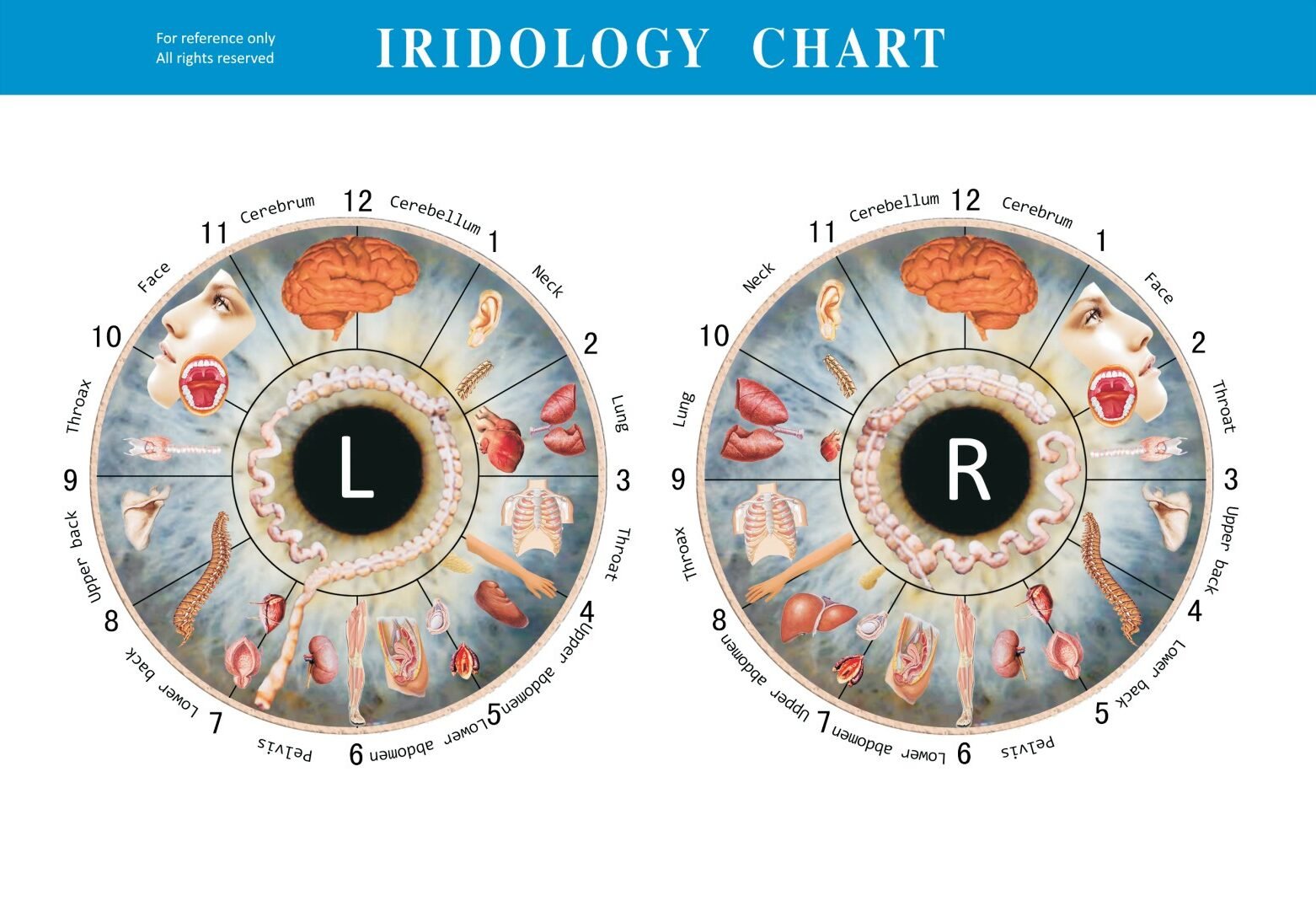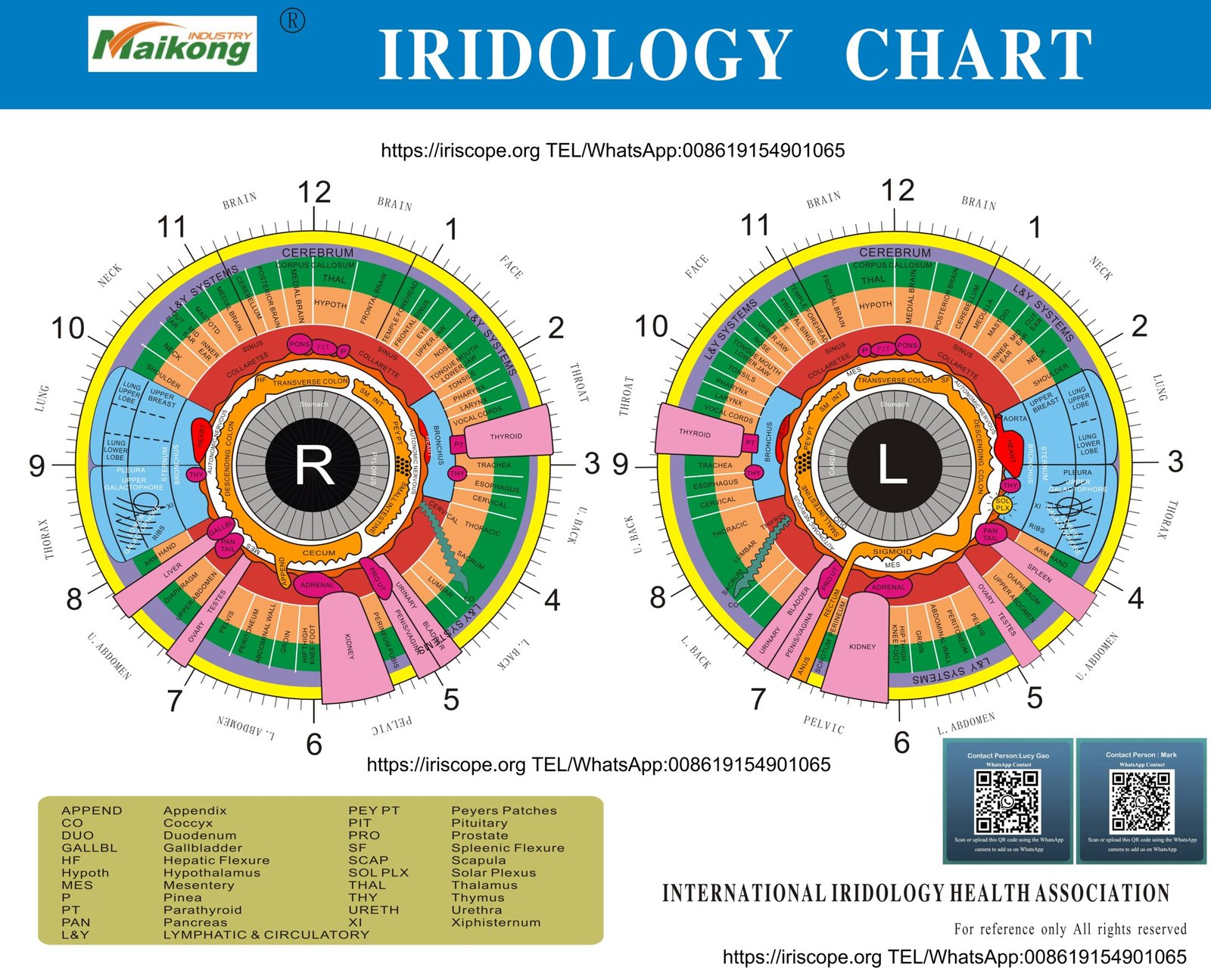The ancient practice of ایریدولوژی has evolved significantly over centuries, transforming from manual observation techniques to sophisticated digital analysis. This comprehensive guide explores how traditional and modern digital ایریدولوژی methods compare, helping practitioners and health enthusiasts understand the advantages, limitations, and applications of each approach. Whether you’re a seasoned iridologist looking to upgrade your techniques or someone curious about this fascinating field of holistic health assessment, this comparison will provide valuable insights into both methodologies.
Modern digital iridology equipment (left) compared to traditional manual analysis methods (right)
چیست عبادت؟
عبادت is the study of the iris, the colored part of the eye, to detect potential health issues and constitutional strengths and weaknesses. This practice is based on the theory that each organ in the human body corresponds to a specific region in the iris. Practitioners believe that changes in these regions—such as marks, discolorations, or structural alterations—can indicate health problems in the corresponding body parts, often before physical symptoms appear elsewhere.
The fundamental principle of ایریدولوژی suggests that the iris contains detailed information about the body’s past, present, and potential future health conditions. While conventional medicine has not widely embraced ایریدولوژی, many holistic health practitioners utilize this technique as part of their comprehensive health assessment toolkit, particularly in naturopathic and complementary medicine fields.

The intricate patterns of the human iris contain valuable health information according to iridology principles
Evolution of عبادت: From Ancient Practice to Modern Technology
The journey of ایریدولوژی spans centuries, evolving from simple observations to sophisticated digital analysis systems. Understanding this evolution provides context for comparing traditional and modern approaches.
Origins of Traditional عبادت
The earliest documented references to iris analysis appear in ancient Egyptian, Chinese, and Greek texts, suggesting that the practice of examining eyes for health insights dates back thousands of years. However, modern ایریدولوژی as a systematic practice is generally attributed to Dr. Ignaz von Peczely, a Hungarian physician in the 19th century.
The story goes that as a child, von Peczely noticed changes in an owl’s iris after the bird suffered a broken leg. This observation sparked his interest in the connection between iris markings and physical trauma or illness. He later developed the first comprehensive iris chart mapping specific regions to corresponding body parts and organs.
Traditional ایریدولوژی techniques relied on simple tools like magnifying glasses and natural light. Practitioners would manually examine the iris, comparing observations to standardized charts. Bernard Jensen, an American chiropractor, further developed these techniques in the 1950s, creating detailed iris charts that remain influential today.
Emergence of Digital عبادت
The late 20th and early 21st centuries witnessed a technological revolution in ایریدولوژی with the introduction of digital imaging systems. These advancements transformed the practice from subjective observation to more standardized analysis.
Digital ایریدولوژی employs specialized cameras (iriscopes) that capture high-resolution images of the iris. These images are then analyzed using sophisticated software that can identify, categorize, and map iris markings with precision previously impossible with manual methods. The software can detect subtle color variations, structural anomalies, and patterns that might escape the human eye.
Modern systems often include databases that compare findings against thousands of other cases, allowing for more consistent analysis and interpretation. Some advanced systems even incorporate artificial intelligence to assist in pattern recognition and correlation with health conditions.
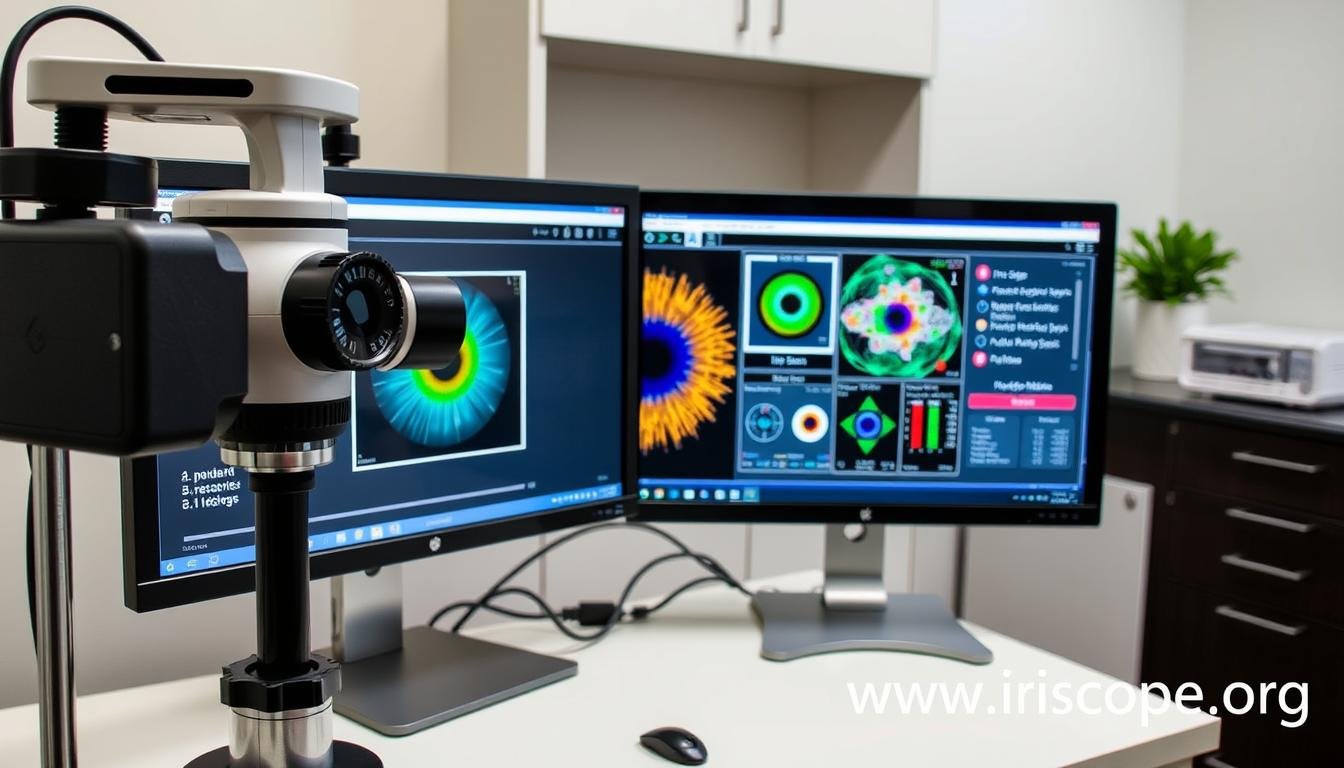
State-of-the-art digital iridology system with specialized camera and analysis software
Key Differences Between Digital and Traditional عبادت
Understanding the fundamental differences between digital and traditional approaches helps practitioners and clients make informed decisions about which method might best suit their needs.
Methodology Comparison
Traditional Methodology
- Manual examination using magnifying glasses or simple iriscopes
- Direct visual assessment by the practitioner
- Interpretation based on practitioner’s experience and knowledge
- Paper charts and reference materials
- Hand-drawn documentation of findings
- Limited ability to track subtle changes over time
Digital Methodology
- High-resolution digital cameras with specialized lighting
- Computer-assisted analysis of iris images
- پروتکل های تفسیر استاندارد شده
- Digital reference databases and comparison tools
- Automated documentation and reporting
- Precise tracking of changes through comparative analysis
Accuracy and Reliability
The question of accuracy stands at the center of the digital versus traditional debate in ایریدولوژی. Research and practitioner experience suggest several key differences:
| Factor |
Traditional عبادت |
Digital عبادت |
| Consistency |
Varies with practitioner skill and experience |
Higher consistency through standardized analysis |
| Detail Detection |
Limited to what human eye can discern |
Can detect microscopic details invisible to naked eye |
| Reproducibility |
Difficult to reproduce exact findings |
Highly reproducible with stored digital images |
| تفسیر |
Relies heavily on intuition and experience |
Combines software analysis with practitioner expertise |
| مستند سازی |
Manual notes and sketches |
Comprehensive digital records with precise measurements |
Accessibility and Cost
Practical considerations often influence the choice between traditional and digital methods:
Traditional عبادت
- Lower initial investment (basic equipment costs)
- Portable equipment for mobile practice
- No technical expertise required for equipment operation
- No software updates or maintenance fees
- Accessible in areas with limited technological resources
Digital عبادت
- Higher initial investment for equipment and software
- Requires technical knowledge and training
- May need regular software updates and maintenance
- Dependent on electrical power and sometimes internet connectivity
- Potentially higher client fees to offset equipment costs
Considering an upgrade to digital iridology?
Our experts can help you compare equipment options and find the perfect solution for your practice needs.
Contact Our Specialists
Pros and Cons of Traditional عبادت Methods
Traditional ایریدولوژی methods have stood the test of time, offering unique advantages while also presenting certain limitations compared to newer digital approaches.
3.8
Traditional Iridology Overall Rating
Practitioner Connection
4.7
“Traditional ایریدولوژی fosters an intimate connection between practitioner and client that technology can sometimes diminish. The art of direct observation cultivates intuitive skills that complement the science.”
– برنارد جنسن ، پیشگام ایریدولوژی مدرن
Traditional methods excel in creating a personal connection with clients and require minimal technical expertise. The direct observation process allows experienced practitioners to develop intuitive insights that may complement the analytical approach. However, these methods are limited in their ability to detect microscopic details and may suffer from inconsistency between practitioners.
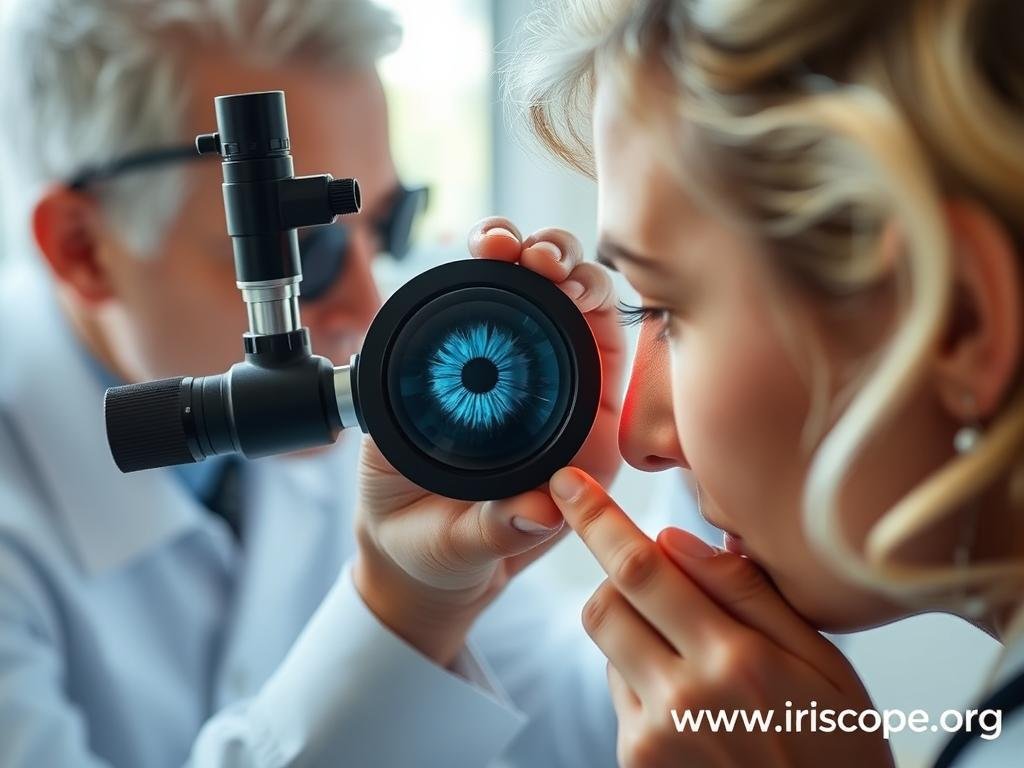
Traditional iridology examination using magnification and natural light
Advantages of Digital عبادت فناوری
Digital ایریدولوژی represents a significant technological advancement that offers numerous benefits over traditional methods, particularly in areas of precision, documentation, and analysis.
Enhanced Precision
Digital cameras can capture iris details at magnifications of 20x or greater, revealing structures invisible to the naked eye or basic magnifiers. This level of detail allows for identification of subtle changes and patterns that might otherwise be missed.
Objective Documentation
Digital systems create permanent, high-resolution records of each iris examination. These images can be stored, compared over time, and shared with clients or other practitioners, providing objective documentation of changes.
Analytical Capabilities
Specialized software can analyze iris characteristics using consistent parameters, reducing subjective interpretation variations. Some systems can measure specific features like fiber density, pigmentation distribution, and structural anomalies.
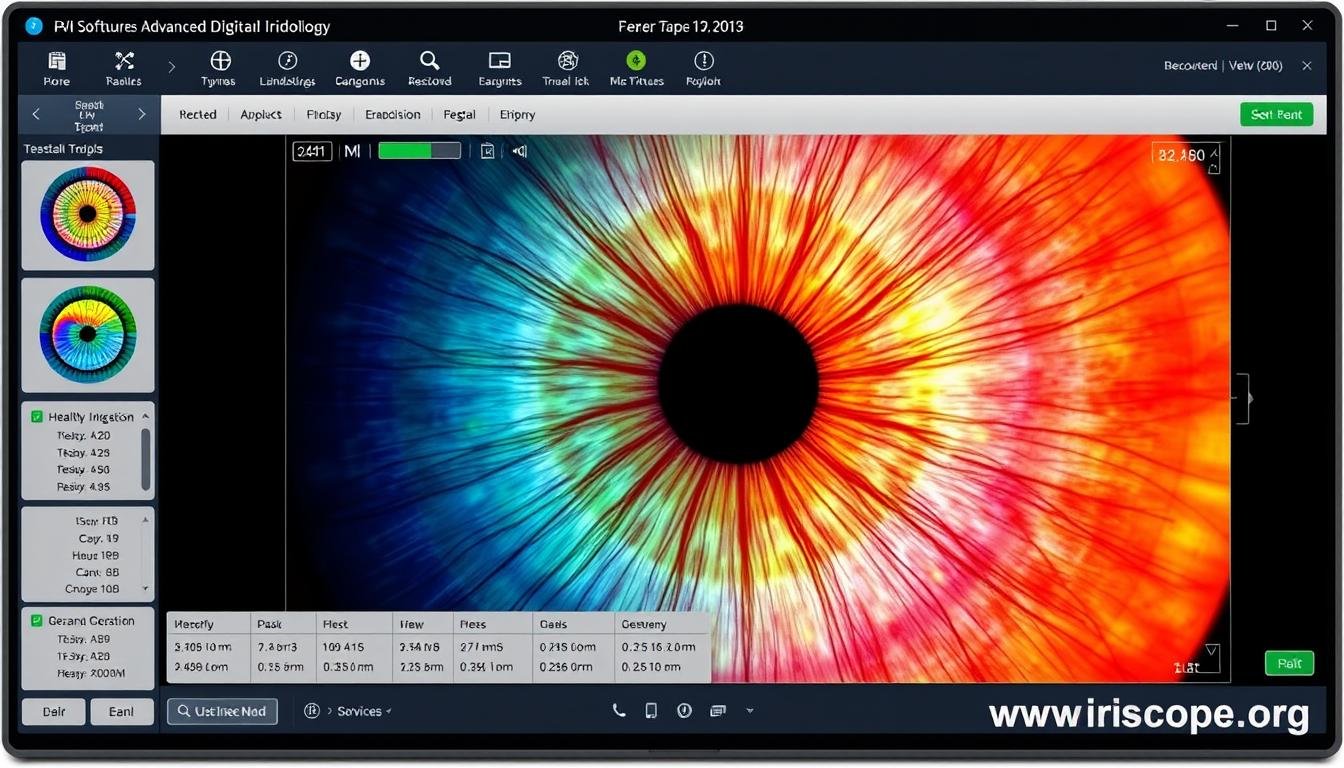
Advanced digital iridology software providing detailed iris analysis with health correlations
Statistical comparisons between digital and traditional methods reveal significant advantages in several key areas:
| Performance Metric |
Traditional Methods |
Digital Methods |
Improvement |
| Detail Resolution |
5-10x magnification |
20-40x magnification |
300-400% |
| Analysis Time |
30-45 minutes |
5-15 minutes |
66-88% reduction |
| Inter-examiner Consistency |
42-68% agreement |
78-92% agreement |
35-53% |
| Client Education Effectiveness |
معتاد |
عالی |
40-60% estimated |
Did you know? Digital iridology systems can detect and analyze over 15,000 individual fibers in a single iris, allowing for unprecedented detail in constitutional assessment.
Explore Our Digital Iridology Equipment
Discover our range of professional iriscopes, cameras, and analysis software designed for practitioners at all levels.
Request Product Catalog
Case Studies: When to Choose Which Method
Different practice scenarios and client needs may call for either traditional or digital ایریدولوژی approaches. These case studies illustrate optimal applications for each methodology.
Case Study 1: Mobile Holistic Health Practice
Scenario: A practitioner traveling between multiple locations offering holistic health assessments
Recommendation: Traditional iridology tools with portable handheld iriscope
Rationale: The mobility requirements and varied practice environments make traditional tools more practical. The practitioner can perform examinations without dependence on power sources or digital infrastructure.
Case Study 2: Integrated Wellness Clinic
Scenario: Established clinic offering comprehensive health assessments alongside other modalities
Recommendation: Digital iridology system with client education features
Rationale: The fixed location and professional setting benefit from the precision and client education capabilities of digital systems. The visual presentation of findings enhances client understanding and engagement.
Case Study 3: Research and Education
Scenario: Institution conducting research on iridology correlations or teaching iridology principles
Recommendation: Hybrid approach with both digital and traditional methods
Rationale: Research requires the precision and documentation capabilities of digital systems, while teaching benefits from demonstrating both approaches. The comparative analysis strengthens both research validity and educational depth.

Practitioner demonstrating comparative analysis using both methodologies
Future of عبادت: Blending Tradition with Innovation
The evolution of ایریدولوژی continues as practitioners find ways to integrate the best aspects of both traditional and digital approaches. This hybrid methodology represents the cutting edge of the field.
Emerging trends in ایریدولوژی include:
- AI-Enhanced Analysis: Artificial intelligence algorithms that can identify patterns and correlations beyond human perception while still incorporating practitioner expertise
- Telemedicine Integration: Remote iris analysis capabilities allowing practitioners to review client iris images submitted electronically
- Longitudinal Tracking: Systems that monitor subtle iris changes over time, potentially identifying developing conditions before symptoms manifest
- Cross-Disciplinary Applications: Integration with other assessment modalities like blood analysis, creating more comprehensive health profiles
- Research Validation: Increased scientific studies examining correlations between iris signs and health conditions using standardized digital methodologies
The ideal approach for many practitioners is becoming a “blended methodology” that leverages digital precision while maintaining the intuitive aspects of traditional practice. This combination honors the heritage of ایریدولوژی while embracing technological advancement.
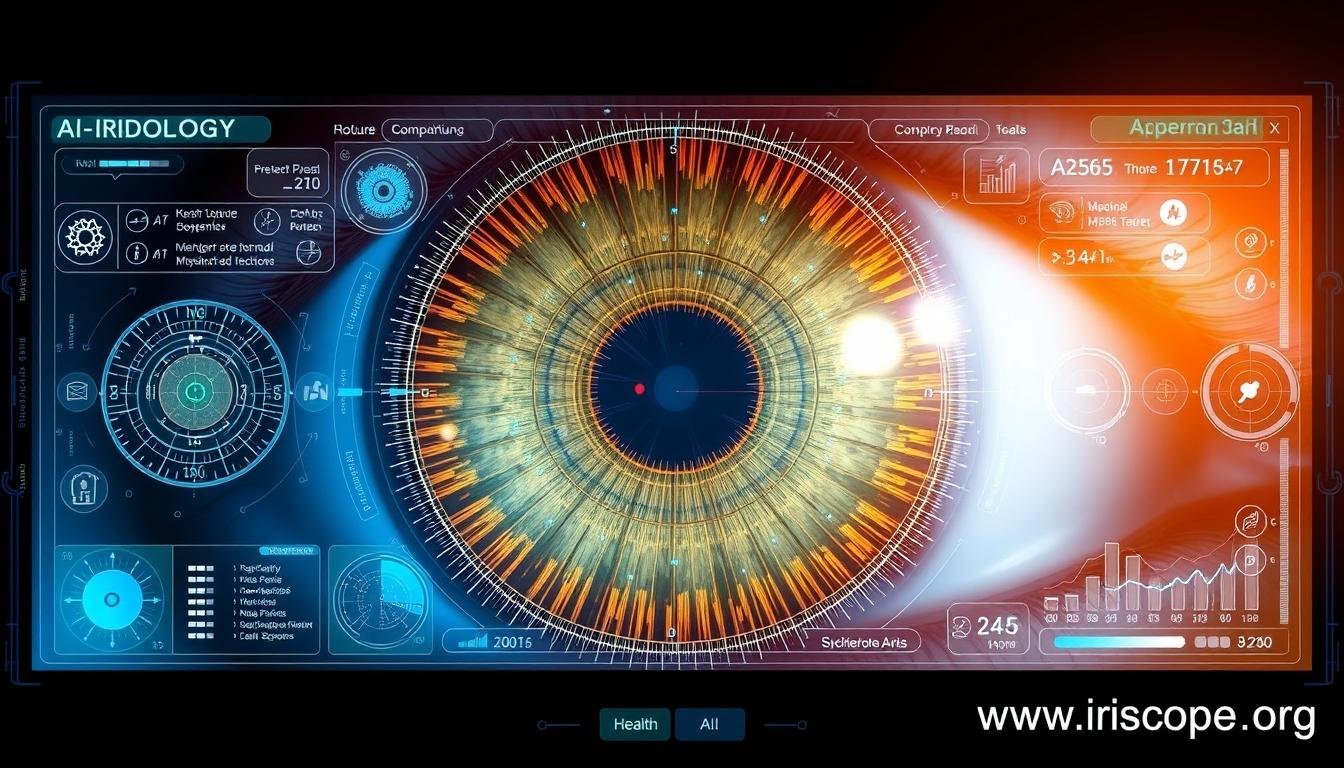
Next-generation iridology technology incorporating AI and predictive analytics
سؤالات متداول در مورد عبادت
است ، ایریدولوژی از نظر علمی معتبر است؟
The scientific validation of ایریدولوژی remains a subject of debate. While some studies have found correlations between iris signs and certain health conditions, others have not demonstrated consistent results. Digital ایریدولوژی is helping to standardize methodology, which may contribute to more consistent research outcomes in the future.
قوطی ایریدولوژی تشخیص بیماری های خاص؟
Responsible practitioners emphasize that ایریدولوژی is not a diagnostic tool for specific diseases but rather an assessment of constitutional strengths and weaknesses. It may indicate areas of stress or dysfunction in the body but should be used as part of a comprehensive health evaluation, not as a standalone diagnostic method.
How much training is required to practice ایریدولوژی؟
Training requirements vary by country and organization. Comprehensive training typically includes anatomy and physiology, iris topography, constitutional assessment, and clinical application. Digital ایریدولوژی requires additional training in equipment operation and software interpretation. Most reputable programs require several hundred hours of study and supervised practice.
What is the cost difference between traditional and digital ایریدولوژی equipment?
Traditional equipment (magnifiers, penlight, basic iriscope) typically costs between $200-$1,000, while professional digital systems range from $2,000 to $15,000 depending on camera quality, software capabilities, and additional features. The investment in digital equipment often translates to higher client fees but may be offset by increased efficiency and enhanced client education.
قوطی ایریدولوژی track health improvements over time?
Yes, one of the strengths of ایریدولوژی is its ability to monitor changes in the iris that may reflect improvements in health status. Digital systems excel in this application as they can precisely document and compare iris characteristics over time, providing objective evidence of changes that might be subtle to the naked eye.
Want a personalized ایریدولوژی assessment?
Contact our certified practitioners today to learn more about our services or equipment options.
به ما ایمیل بزنید
Both traditional and digital ایریدولوژی methods offer valuable approaches to holistic health assessment. While traditional methods provide a time-tested, intuitive approach with minimal equipment needs, digital technology offers unprecedented precision, documentation capabilities, and analytical tools. Many practitioners find that combining elements of both methodologies provides the most comprehensive approach.As ایریدولوژی continues to evolve, the integration of traditional wisdom with technological innovation promises to enhance this ancient practice’s relevance and effectiveness in modern holistic health care. Whether you’re a practitioner considering which approach to adopt or someone interested in experiencing an ایریدولوژی assessment, understanding these methodological differences helps inform your decision.
















